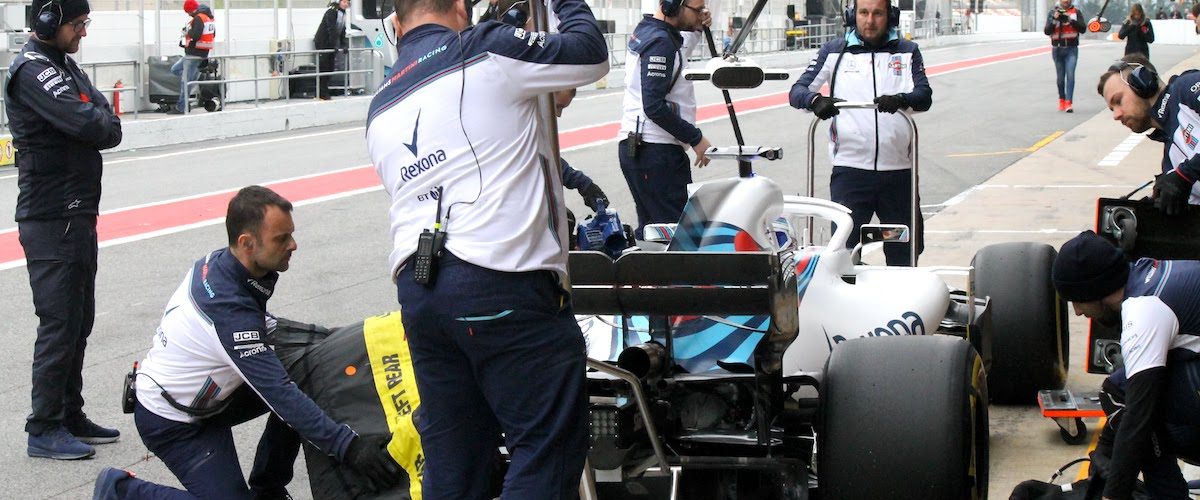Not since the heady days of the turbo-charged 1980s have power figures of quite this level been produced by F1 engines – not even by the highly developed 3-liter V10s that were last used in 2005. These peaked at around 950bhp.
So for hybrid power units – PUs – to be surpassing those figures despite having internal combustion engines of only 1.6-litre capacity, a fuel-flow restriction of 100kg/hr, a race fuel limit of 105kgs and strict limitations on the number of replacement parts that can be used without incurring penalties (thereby forcing manufacturers to compromise outright performance for the sake of increased reliability), is truly remarkable.
Here’s how…
At the heart of the matter is a 1.6-litre V6 internal combustion engine (ICE). This is what most would still regard as a conventional racing engine: fuel in; mixed with air (via a turbocharger spinning at up to 125,000rpm) and ignited with a high-performance spark plug.
So far, so conventional, but these ICE units are now incredibly advanced, representing a pinnacle of what’s known about a long-established motor technology. For example, the fuel-air mixture inside the cylinders is more homogenous than it has ever been – ie the mixture of fuel and air is more ‘complete’, allowing the burn inside each cylinder to be cleaner, more efficient and to produce more power for a given amount of fuel.
The ignition procedure itself is far more sophisticated than anything used outside F1: rather than the spark plug being placed inside the combustion chamber, they’re housed in a separate pre-ignition chamber, where the spark lights three percent of the fuel-air mix. This produces a ‘flame jet’ that ignites the remaining 97 percent of the mix, resulting in a fuller ‘burn’ – ie more power and more efficiency.
Revving to a capped 15,000 rpm (way lower than the 20,000rpm peaks of the 2.4-litre V8 units that preceded hybrids), the ICEs produce in the region 700bhp of the total PU output, though the four F1 engine manufacturers – Mercedes, Ferrari, Renault, and Honda guard accurate figures closely.
The remaining 300-or-so bhp is produced by two electric motors attached to the ICE and working in harmony with it.
The first of these is the so-called MGU-K – the kinetic energy recovery unit. In simplistic terms, this ‘harvests’ energy produced under braking that would otherwise be lost. Under braking, the motor-generator acts via a flywheel to generate electricity, which is then stored in a 20kg lithium-ion battery housed within the PU. When the MGU-K is used ‘in reverse’ – as a motor – it can contribute up to a regulated maximum of 120kW of power – equivalent to 160bhp.
The second motor-generator unit – the MGU-H – converts heat energy into electricity, to be deployed in a similar way – at the driver’s command via his right foot and throttle.
The MGU-H is located between the turbine and compressor of the turbocharger, on top of the V6 engine. When exhaust gases spin the turbine, they also ‘spin up’ the MGU-H, via a shaft that connects the turbine and compressor. This produces electricity, also stored in the battery. Under acceleration, the electricity is used in part to help eliminate turbo lag, by spinning the compressor in addition to the flow of exhaust gases over its blades. The energy that can be harnessed by the MGU-H is not restricted, as it is for the MGU-K.
Working in unison these three motors and an energy store (battery) represent by far the most complex – and expensive – ‘engines’ ever used in Formula 1. They’re also, however, dramatically more efficient than any ever used in the sport. Comparably powerful 3.0-litre V10 engines of the early noughties had fuel-flow rates of more than 190kg/hr – so they were burning an awful lot more ‘juice’ to produce their grunt.
Now, thanks to complex but deftly integrated hybrid technology and further gains in internal combustion efficiency, even greater outputs are being achieved from little more than half that fuel flow.
The 1000bhp hybrid F1 engine is truly a modern engineering masterpiece.
Image: Williams Martini Racing FW41 during testing days in Barcelona, February 2018. © Acronis.



